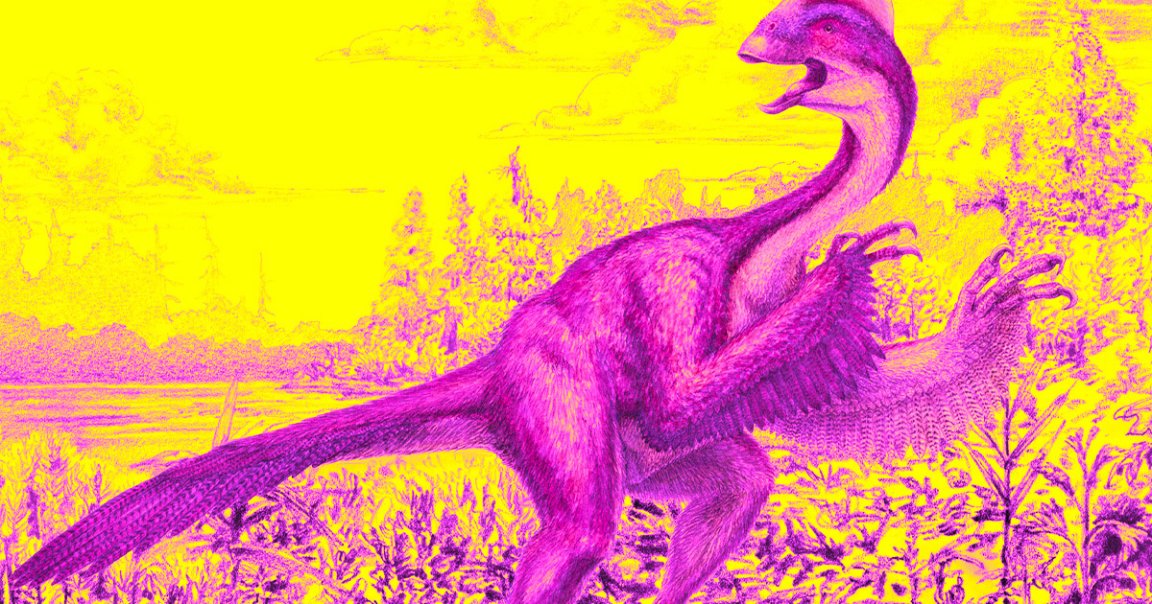
Hell Spawn
In 2014, scientists identified a new species of dinosaur nicknamed the “chicken from hell” — a birdlike, clawed beast weighing up to 750 pounds that stood over 11 feet tall.
Now, it turns out that Anzu wyilei, the species’ official name, was not the only one of that infernal ilk. A team of researchers say they’ve discovered another species part of the same family, caenagnathid, which until now Anzu was the sole member of.
The new dino, at roughly the weight of a human, is being christened as the no-less-fearsome-sounding “pharaoh’s dawn chicken from hell,” or Eoneophron infernalis. Its discovery, as detailed in a study published in the journal PLOS One, could challenge existing theories that hold that the dinosaurs were already declining in diversity before going extinct from the asteroid that struck the Gulf of Mexico at the end of the Cretaceous period.
Despite the hell bird’s lofty title, the study’s lead author says that its fossil had a rather unceremonious provenance: he bought them online in 2020, when they were mistakenly sold as Anzu remains. Little did he know at the time that he had a whole new species on his hands.
“I felt my heart skip a beat,” Kyle Atkins-Weltman at Oklahoma State University told Live Science. “I was like, is this really happening to me this early in my career?”
No Kidding
In a writeup for The Conversation, Atkins-Weltman describes the steps that led to the discovery.
His team’s initial examination of the bones found that they were “significantly smaller” than Anzu. Their assumption was that it must’ve been a juvenile specimen, which would’ve been a tantalizing discovery on its own because no such Anzu fossil had ever been found.
When they cut into the fossil, however, they encountered something else entirely. The bones’ lines of arrested growth, which Atkins-Weltman explains are sort of like the rings in a tree that help scientists estimate their age, were progressively denser in their spacing.
That meant the specimen was fully-grown, and that what they were dealing with was not, in fact, Anzu.
Big Family
The researchers now conclude that there were more caenagnathids roaming North America than once believed. In fact, they suspect that there’s a third hell-chicken out there that would be the smallest of the batch at around the size of a dog, based on a recovered partial foot bone.
The abundance of similar species, the researchers say, challenges the belief that caenagnathids and other dinosaurs were already dying out before the asteroid hit.
“While there are plenty of questions still outstanding in this extinction debate, Eoneophron adds evidence that caenagnathids were doing quite well for themselves before the asteroid ruined everything,” Atkins-Weltman wrote in The Conversation.
The apparent decline in diversity may be attributed to biases in how remains are fossilized and identified. After all, we only have a pretty slim picture of all the creatures that existed in the dinosaur age. Who knows how many whole new species are being mistaken for existing ones?
More on dinosaurs: Scientists Unearth Skull of Terrifying Sea Monster